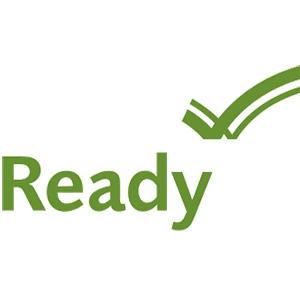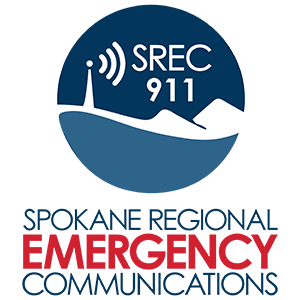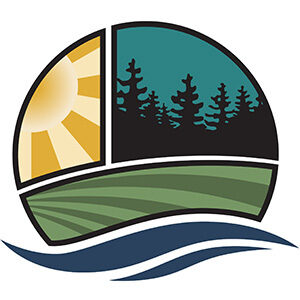Contact Us
Overview
Wildfires are powerful and can be very dangerous. Learn how to protect yourself, your loved ones and your property from wildfire.
Basics
Wildfire is a fact of life in Spokane County.1 Wildfires near the places we live, work and play can produce thick smoke, flying embers and high heat that threaten lives and safety. Wildfire behavior is often unpredictable as fires move, spread and change directions quickly. Everyone can take steps to help reduce the risk of wildfire and learn how to stay safe during a wildfire emergency.
Larger and More Frequent Wildfires
Naturally occurring wildfires have shaped ecosystems from time immemorial.2,3 Fire has a natural and essential role in Eastern Washington’s ecosystem. Historically, frequent but less severe wildfires4 occurred every six to 30 years.5 Wildfire activity has increased in recent years.6 Wildfires have become more destructive,7 and more people are living in areas at higher risk for wildfires.8,9 With an increasing number of fires, larger fires, and more homes in wildfire-prone areas, the risk to human health and safety is growing.
Risk Factors – Higher Risk Areas and Behaviors
In the Spokane region, many people live, work and play in or near natural areas. Areas where homes are built near wildlands are called the wildland-urban interface or WUI (woo-ee).8 The risk of wildfire is higher in WUI areas.8 See the Washington State Department of Natural Resources’ map of Washington’s wildland-urban interface areas.
Nearly 90% of wildland fires in the United States are caused by people.10 Debris burning, unattended campfires, and sparks from vehicles are top causes of wildfire starts in Washington.11 Learn more about how to reduce human-caused wildfires from Smokey Bear and the U.S. Forest Service.
Spokane County Data
On August 18, 2023, four large fires erupted in Eastern Washington, spreading resources thin under extremely dangerous conditions. Two fires in Spokane County, named the Gray and Oregon fires, ultimately destroyed 366 homes and caused two deaths.
This StoryMap presentation, developed by the Washington State Department of Natural Resources, illustrates what happened and how agencies and individuals collaborated to respond. With Spokane County consistently bearing the highest concentration of fires annually in Washington, the lessons learned from the Gray and Oregon wildfires provide valuable information that can be used to strengthen community preparedness, improve response and reduce future risk.
Recommendations
Even though wildfires continue to increase in frequency and severity in Eastern Washington, you can take steps to protect your property, yourself and your loved ones by learning:
- How to stay informed about area wildfires
- What to do in the event of a wildfire
- How to prevent wildfire
- About things you can do now to prepare for a wildfire
Stay Informed About Wildfires in Your Area
There are several things you can do to stay informed during fire season.
Weather Alerts
Pay attention to fire conditions. The National Weather Service (NWS) issues a Red Flag Warning when critical fire weather conditions are happening or about to happen.12 If a Red Flag Warning is issued, take extra precautions in natural areas, be on alert for signs of fire in the area, and pay attention to emergency alerts.
Emergency Alerts
Wireless Emergency Alerts (WEA) are sent automatically to WEA-capable cell phones in the vicinity of an emergency. WEA alerts are based on the cell phone’s location, not the home address of the phone’s owner. You can register to receive alerts based on your home address on Alert Spokane. This service provides local alerts for emergencies near the addresses you provide, no matter where the cell phone happens to be.
What To Do When Wildfire Is in the Area
If you see wildfire, call 911.13 In windy conditions, wildfire can spread faster than most people can run.14
Evacuation Orders
Follow evacuation orders and instructions to leave to avoid being caught in fire, heavy smoke or road congestion.15
Some People May Need More Time to Evacuate
People with disabilities and people without access to vehicles may need more time to evacuate safely. Leave at an earlier stage of evacuation if you need more time to evacuate. Plan for accessible transportation that may be needed during evacuation.16
Evacuation Routes
Use the official evacuation maps provided by Spokane Regional Emergency Communications.
If you feel threatened by fire, do not hesitate to leave the area.
Clothing
When evacuating from a fire, wear long pants, a long sleeve shirt, sturdy shoes, an N95 respirator face mask and goggles or glasses, if possible.17
While Evacuating
Stay alert to emergency notifications. Remain calm. Follow the advice given by authorities. Follow local fire departments or law enforcement agencies on social media. Stay tuned to local radio or TV stations, watch for cell phone alerts, or use a NOAA weather radio to get updates.
Support firefighters, first responders and law enforcement agents by following instructions. During a life-threatening emergency, cooperation can save lives and property.
Prevent Wildfire
There are two parts to preventing wildfire. You can take steps to prevent a wildfire from starting in the first place, and you can take steps to help prevent wildfire from spreading.
Reduce the Risk of Starting Wildfire

Some simple steps to reduce the risk of starting wildfires are:
- Dispose of cigarettes and smoking materials properly18
- Check for and follow burn restrictions in your area19
- Secure chains and remove any dragging parts from your vehicle20
- Build campfires at least 15 feet from trees and all flammable objects21*
- Clear a 10-foot-diameter area around campfires21
- Fully extinguish campfires until they are cold21
*Check local requirements. Washington state law prohibits recreational fires within 25 feet of a structure or combustible material, but your county or city may have more strict regulations.22
Find Current Burning Conditions for Spokane County
Find current burning conditions for Spokane County and sign up for burn restriction updates from Spokane Regional Clean Air Agency. In Washington, outdoor recreational fires must be at least 25 feet from all structures and combustibles.20
Leave Fireworks to the Professionals
The number of human-caused wildfires spikes around the Fourth of July.23 Check conditions and local regulations before using fireworks. The use of fireworks is illegal in most areas of Spokane County.24 If fireworks are legal in your area and you choose to use them, have a bucket of water or a hose nearby when igniting fireworks. Only light one firework at a time. Soak used or faulty fireworks in water for a few hours before discarding.25
Learn more about how to avoid starting wildfires from the U.S. Department of the Interior.
Stop Wildfire From Spreading
Flying embers are the leading cause of homes being lost to wildfire.1 Help prevent wildfire from spreading to homes by creating defensible space, hardening building exteriors and landscaping with fire-resistant materials.
Create Defensible Space
Create defensible space around homes, including commercial housing units and parks for mobile homes and RVs, and other buildings. Defensible space is an important and effective way to help protect people and property from catastrophic wildfire.5
- Immediate Zone: Make sure there are no flammable materials of any kind from zero to five feet around the edges of the home and attached decks.
- Intermediate Zone: Ensure that any vegetation is clean, green and well-maintained in the area five to 30 feet from the building.
- Extended Zone: Remove dead plants and clear heavy accumulation of litter or debris in the area 30 to 200 feet away from buildings, decks and your home’s edges.

Flying embers are the cause of fire in the majority of cases where homes are lost to wildfire.
Start by clearing debris away from homes and other occupied structures. Clean out gutters and keep roofs clear of flammable materials. Cut back overhanging branches. Move all flammable items at least five feet away from the building. Keep all areas up to 30 feet around homes lean, clean and green by removing dead branches and maintaining lawns and other plants during hot summer months.26
Harden Building Exteriors
Up to 90% of home ignitions from wildfire are caused by flying embers, not walls of flame.27 Don’t store flammable material under decks or balconies.28 When replacing a roof, siding, decks or gutters, choose fire-resistant materials whenever possible. A range of low-cost to more expensive upgrades to buildings can increase a building’s resistance to wildfire. Find detailed information on home hardening options at ReadyforWildfire.org.
Landscape With Fire-Resistant Materials and Vegetation
You can also choose plants that are more fire resistant. Learn about options and see a list of plants in the Fire-Resistant Plants for Eastern Washington Guide. To learn more about making homes more resilient to wildfire, visit FEMA’s blog 3 Tips to Make Your Home Resilient Against Wildfires.
Prepare Now for Wildfire Emergency
If you are ever instructed to evacuate during a fire event, you may have very little time to leave. Prepare now to be ready to go quickly during an emergency.

Pack a Go Bag to grab with 60 seconds’ notice.
- Include copies of important documents, essential medications, a cell phone charger, cash, and necessities, like water, non-perishable snacks, sturdy shoes and a change of clothes.
- Have an N95 respirator mask for every member of the family.
- Remember to include special items like diapers or essential pet supplies.

Prepare a list of what you would take if you had 15 minutes’ notice (valuables, personal electronic devices, first aid kit) and what you would pack if you had two hours’ notice . The 6 P’s of Evacuation29 is a helpful guide:
- People and pets
- Prescriptions, pills, eyeglasses, hearing aids
- Papers, phone numbers and important documents
- Pictures, priceless items and irreplaceable memorabilia
- Phones, personal computers, portable hard drives
- Plastic banking and credit cards, identification cards or passports

Plan how you will communicate with loved ones if you are separated. Write down important numbers and save the list in a go bag.
Know your evacuation routes. Make a wildfire escape plan with two different ways out of your neighborhood. Keep your vehicle’s gas tank at least half full and battery half charged.
Have a designated meeting place away from your home and neighborhood where you plan to reunite with loved ones. Know the emergency plans for your child’s school or day care.
Talk to your neighbors about wildfire safety and working together during a wildfire.30,31
Stay alert to fire hazards in your neighborhood. Advocate for safer neighborhoods by talking to property owners, homeowners’ associations, local officials and elected representatives about wildfire safety.
See Also
- FEMA Wildfire Evacuation Checklist
- International Fire Chiefs Association My Personal Wildland Fire Action Guide
People With Disabilities and People Without Access to Vehicles
People with disabilities and people who do not have access to a vehicle may need to do more advance planning for potential evacuations. Plan for transportation needs by discussing evacuation plans with neighbors, family members, local emergency management, transportation agencies, or health care providers.
Home and Property Owners
Multiple programs are available to support homes and communities to be more resilient to wildfires.
Firewise
Spokane Conservation District offers free Firewise risk assessment with a District Forester. Visit Firewise – Spokane Conservation District to learn more and sign up.
Wildfire Ready Neighbors
Wildfire Ready Neighbors offers free consultations to help plan actions, connect with resources and help communities. Sign up at Wildfire Ready to get a free consultation and personalized Wildfire Ready Plan.
Forestland Owners
Find information about financial assistance for wildfire resilience and forest health for non-commercial forestland owners from the Washington State Department of Natural Resources.
- Wildfire Ready Neighbors. Accessed May 5, 2025. https://wildfireready.dnr.wa.gov/
- He T, Lamont BB, Pausas JG. Fire as a key driver of Earth's biodiversity. Biol Rev Camb Philos Soc. 2019;94(6):1983-2010. doi:10.1111/brv.12544
- Walston J, Beaton R. Facilitated Learning Analysis Group. Facilitated Learning Analysis: Gray and Oregon Wildfires, Spokane County 2023. August 30, 2024. Accessed May 6, 2025. https://storymaps.arcgis.com/stories/9a77e2ece6d6421ebc9c6a60635742c8
- Reilly MJ, Halofsky JE, Krawchuk MA, et al. Fire ecology and management in Pacific Northwest forests. In: Greenburg C, Collins B, eds. Fire Ecology and Management: Past, Present, and Future of US Forested Ecosystems Springer; 2021:393-435.
- Murphy A. Fire-Resistant Plants for Eastern Washington. Washington State Department of Natural Resources. June 2021. Accessed May 7, 2025. https://www.dnr.wa.gov/publications/rp_fire_resistant_plants_guide_easternwa.pdf
- Burke M, Driscoll A, Heft-Neal S, Xue J, Burney J, Wara M. The changing risk and burden of wildfire in the United States. Proc Natl Acad Sci U S A. 118(2) e2011048118. January 11, 2021. https://doi.org/10.1073/pnas.2011048118
- U.S. Forest Service. Wildfire Crisis Strategy. January 2022. Accessed May 5, 2025. https://www.fs.usda.gov/sites/default/files/Confronting-Wildfire-Crisis.pdf
- Radeloff VC, Helmers DP, Kramer HA, et al. Rapid growth of the US wildland-urban interface raises wildfire risk, Proc Natl Acad Sci U S A. 115 (13) 3314-3319. March 12, 2018. doi:10.1073/pnas.1718850115
- Schoennagel T, Balch JK, Brenkert-Smith H, et al. Adapt to more wildfire in western North American forests as climate changes. Proc Natl Acad Sci U S A. 2017;114(18):4582-4590. doi:10.1073/pnas.1617464114
- U.S. Fire Administration. Wildfire Outreach Materials. Federal Emergency Management Agency. February 10, 2025. Accessed May 16, 2025. https://www.usfa.fema.gov/wui/outreach/
- Pezzetti L. Most PNW wildfires are caused by humans and it’s getting worse. King5. May 22, 2024. Accessed August 8, 2025. https://www.king5.com/article/tech/science/environment/most-pnw-wildfires-caused-by-humans/281-f3a698fe-5b0c-4186-abef-a6e11e109859
- What is a Red Flag Warning. National Weather Service. Accessed May 7, 2025. https://www.weather.gov/wrn/wildfire-sm#sp5
- Ready Kids. Wildfires. U.S. Dept of Homeland Security. Updated March 6, 2025. Accessed June 10, 2025. https://www.ready.gov/kids/disaster-facts/wildfires
- How Fast Do Wildfires Spread? Wildfire Facts. Western Fire Chiefs Association. November 1, 2022. Edited July 30, 2024. Accessed May 9, 2025. https://wfca.com/wildfire-articles/how-fast-do-wildfires-spread/
- International Association of Fire Chiefs. Ready, Set, Go! National Action Guide. 10th Edition. 2020. Accessed June 10, 2025. https://www.iafc.org/docs/default-source/pdf/rsg-eag.pdf
- People with Disabilities. U.S. Dept of Homeland Security. Updated February 28, 2025. Accessed June 10, 2025. https://www.ready.gov/people-disabilities
- Dress for Survival. Rotary Wildfire Ready. Accessed June 10, 2025. https://www.rotarywildfireready.com/what-to-wear.html
- What Causes Wildfires. Western Fire Chiefs Association. Updated March 4, 2024. Accessed June 10, 2025. https://wfca.com/wildfire-articles/what-causes-wildfires/
- Outdoor Burning. Washington State Department of Natural Resources. Accessed June 10, 2025. https://www.dnr.wa.gov/OutdoorBurning
- Equipment and Vehicle Use. Cal Fire. Accessed June 10, 2025. https://readyforwildfire.org/prevent-wildfire/equipment-and-vehicle-use/
- U.S. Forest Service. Smokey Bear’s Campground Safety Guide. 2012. Accessed June 10, 2025. https://adcouncil-campaigns.brightspotcdn.com/32/bd/8b854cad4375aa281a0a08a25673/smokeycampfiresafetyguide.pdf
- Wash. Admin. Code § 51-54A-0307 (2013).
- Vachula RS, Nelson JR, Hall AG. The timing of fireworks-caused wildfire ignitions during the 4th of July holiday season. PLoS One. 2023;18(9):e0291026. Published 2023 Sep 1. doi:10.1371/journal.pone.0291026
- Iverson F. Where to legally use fireworks in Spokane County and surrounding areas. KHQ Nonstop Local. Updated July 4, 2024. Accessed June 10, 2025. https://www.khq.com/news/where-to-legally-use-fireworks-in-spokane-county-and-surrounding-areas/article_fbe4b208-3872-11ef-8845-6fc5ba6a6fcb.html
- O’Connor C. 10 Tips for Firework Safety. News release. US Dept of Homeland Security. June 30, 2022. Accessed May 12, 2025. https://www.dhs.gov/science-and-technology/news/2022/06/30/10-tips-firework-safety
- Take Action: How to become fire adapted. U.S. Fire Administration. February 9, 2021. Accessed May 12, 2025. https://www.usfa.fema.gov/wui/communities/take-action.html
- Insurance Institute for Business and Home Safety. Wildfire Ready: Why is Defensible Space so Important. June 26, 2020. Accessed May 12, 2025. https://youtu.be/OXnGq1sn0Ck?si=pADy0Tiig8uugWQJ
- Spokane County Fire District 9. Ready, Set, Go! Wildfire Action Plan. International Association of Fire Chiefs. Accessed May 9, 2025. https://scfd9.org/core/files/scfd9/uploads/files/WildfireActionPlan.pdf
- Wildfire Action Plan. Cal Fire. Accessed June 10, 2025. https://readyforwildfire.org/prepare-for-wildfire/wildfire-action-plan/
- Wildfires. Washington State Department of Health. March 2008. Accessed June 10, 2025. https://doh.wa.gov/emergencies/be-prepared-be-safe/severe-weather-and-natural-disasters/wildfires
- U.S. Fire Administration. Wildfire Evacuation Checklist. Accessed August 1, 2025. https://www.usfa.fema.gov/downloads/pdf/publications/wildfire-evacuation-checklist.pdf

Ready.gov
Emergency resources for individuals and organizations developed by the Federal Emergency Management Agency (FEMA).

SREC Evacuation Map
The official Spokane County Evacuation Zone Map provided by Spokane Regional Emergency Communications.

Spokane Conservation District Firewise Program
Learn to prepare your home and community to be resilient to wildfires or schedule a free Firewise Risk Assessment.
